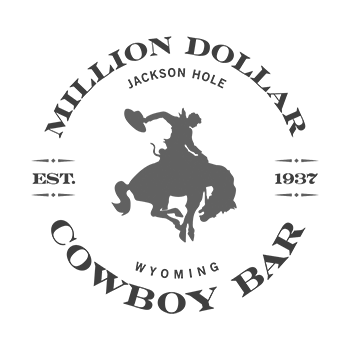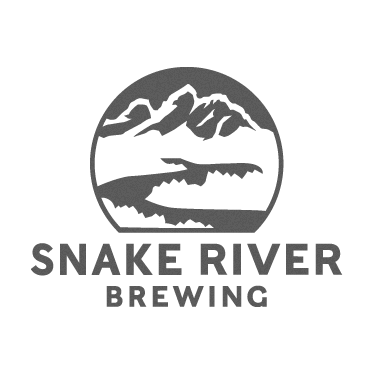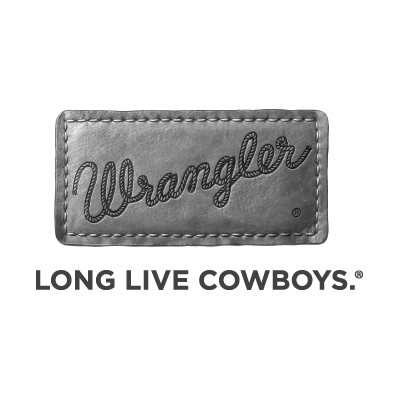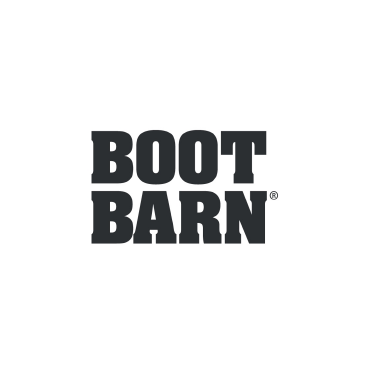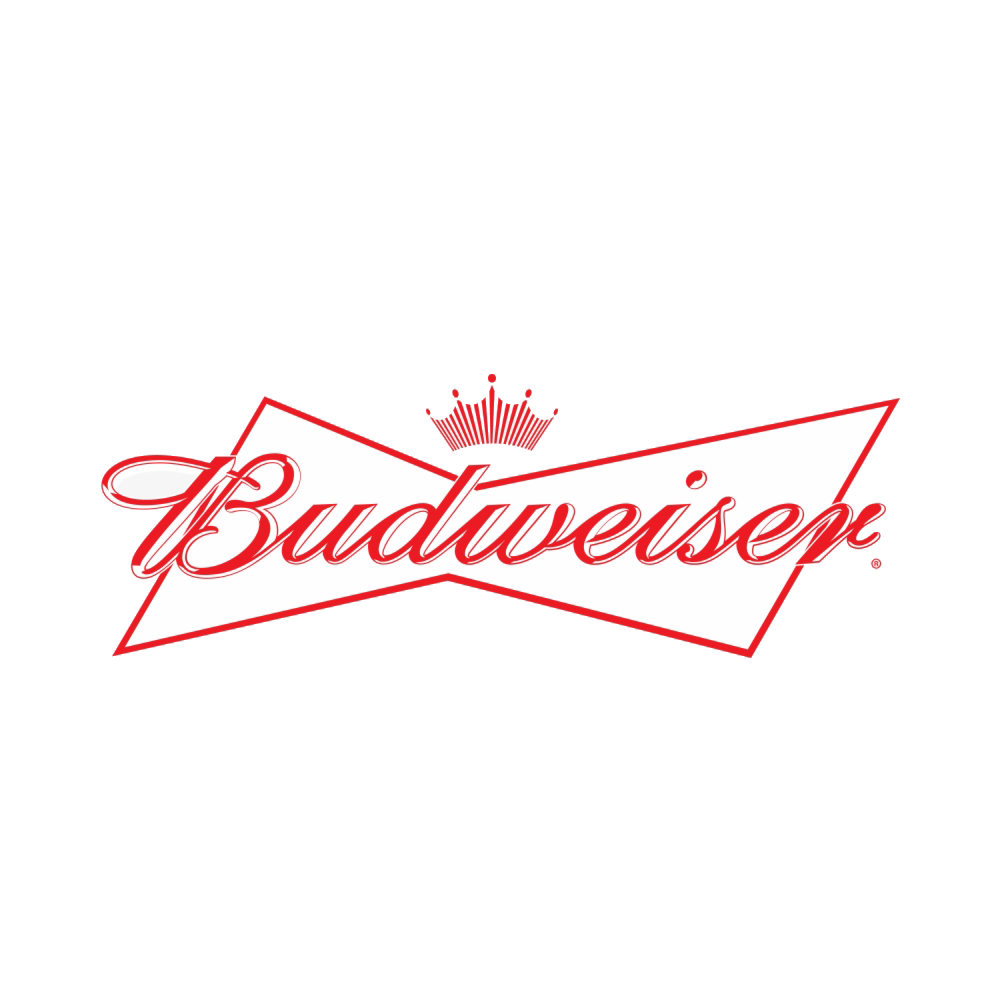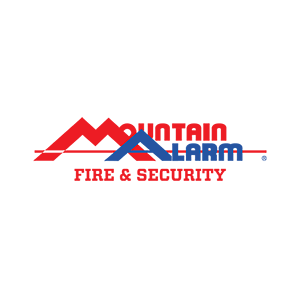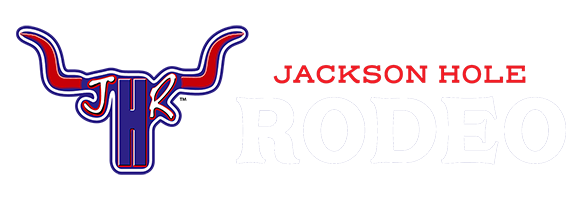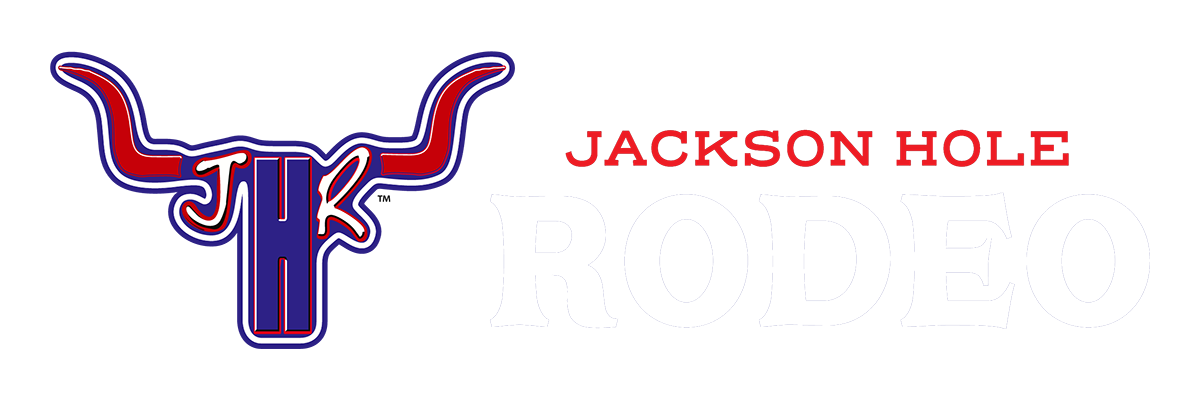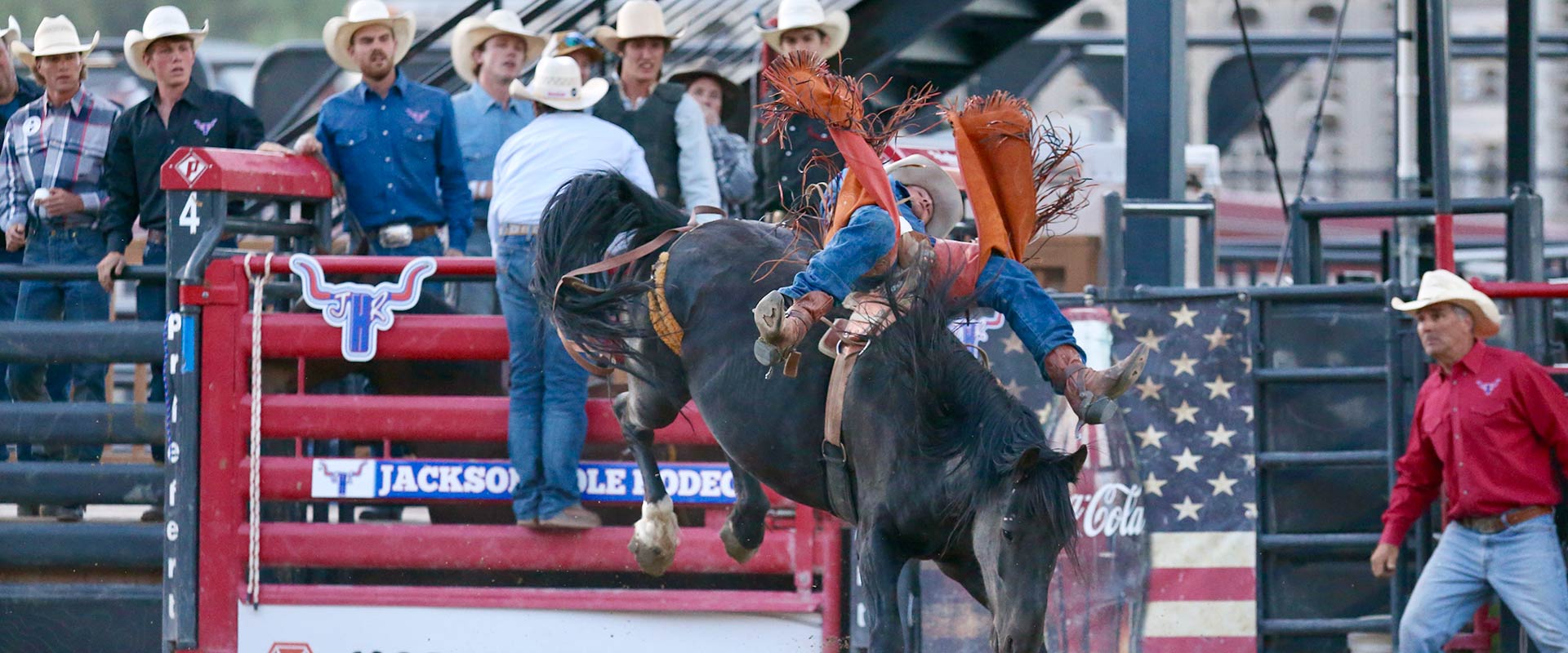
Rodeo 101: The Rules & Regulations
The more you know about the rodeo, the more fun it is to watch! Here’s a helpful guide to get you spectators started on the fundamentals.
Rodeo Competition
According to The Professional Rodeo Cowboys Association (PRCA), professional rodeo action consists of two types of competitions, roughstock events and timed events. Each competition has its own set of rodeo rules and order of events.
Roughstock Events
In the roughstock events, including bareback riding, saddle bronc riding and bull riding, a contestant’s score is equally dependent upon his performance and the animal’s effort. To earn a qualified score, the participant, while using only one hand, must stay aboard a bucking horse or bull for eight seconds. If the rider touches the animal, himself or any of his equipment with his free hand, he are disqualified.
In saddle bronc and bareback riding, a cowboy must “mark out” his horse, which means he must exit the chute with his spurs set above the horse’s shoulders and hold them there until the horse’s front feet hit the ground after the initial jump out of the chute. Failing to do so results in disqualification.
During the regular season, two judges each score a cowboy’s qualified ride by awarding 0 to 25 points for the rider’s performance and 0 to 25 points for the animal’s effort. The judges’ scores are then combined to determine the contestant’s score. A perfect score is 100 points.
Timed Events
In timed events, including steer wrestling, team roping, tie-down roping, barrel racing and steer roping, cowboys and cowgirls at “the other end of the arena” compete against the clock and against each other. A contestant’s goal is to post the fastest time in his or her event. In steer wrestling and the roping events, calves and steers are allowed a head start. The competitor, on horseback, starts in a three-sided fenced area called a box. The fourth side opens into the arena.
A rope barrier is stretched across that opening and is tied to the calf or steer with a breakaway loop. Once the calf or steer reaches the head-start point, predetermined by the size of the arena, the barrier is automatically released. If a cowboy breaks that barrier, a 10-second penalty is added.
Rodeo Events
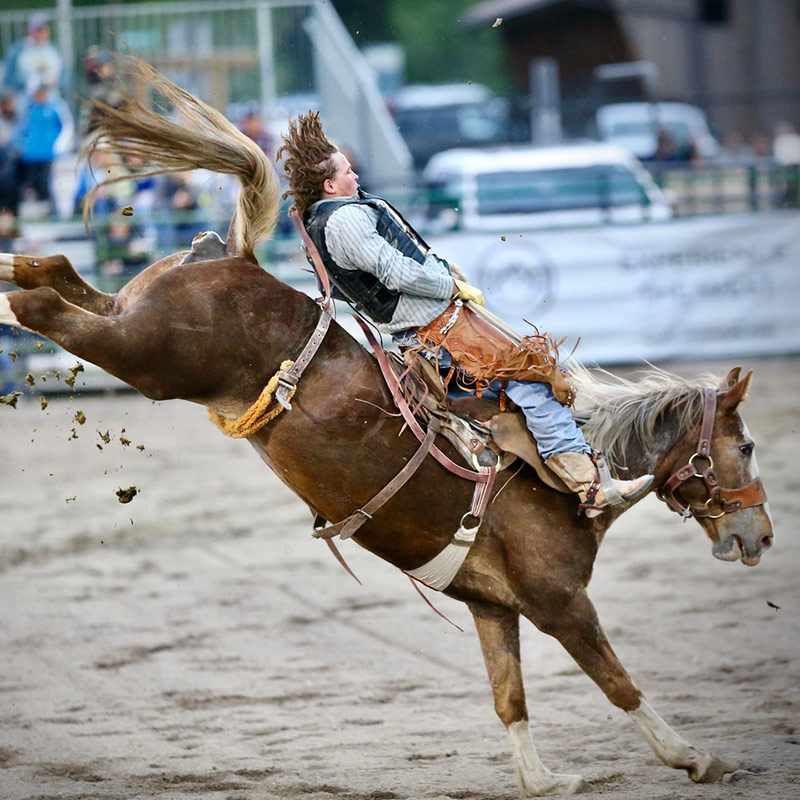
Bronc Riding
Saddle bronc or bareback bronc competition is a rodeo event that involves a participant riding on a horse (sometimes called a bronc or bronco) that attempts to throw or buck off the rider. Originally based on the necessary horse breaking skills of a working cowboy, the event is now a highly stylized competition that utilizes horses that often are specially bred for strength, agility, and bucking ability.

Bareback Bronc Riding
This is one of the most physically demanding events in rodeo competition and has a very high injury rate. Cowboys ride the bucking horse one-handed and cannot touch or hang onto anything with their free hand. Riders use leather rigging with a handle, similar to that of a suitcase, to hold on. To make the event more difficult for the rider, they are required to lean back and spur in a highly stylized manner that was never historically used in actual practice. The cowboy’s spurs have to be above the point of the horse’s shoulders at the first jump out of the chute and touch the horse on every jump for the full time required to earn a qualifying ride. The participant must stay on the horse and ride with proper technique for eight seconds in order for the ride to be judged and scored. Once the ride is complete, the rider may hold on to the rigging with both hands until reached by the pickup riders, who assist the rider in getting off the still-moving horse and arriving safely on the ground. Cowboys are judged on their control and spurring technique, while the horse is judged on power, speed and agility. The two scores are added together with the highest possible score being 100 points.
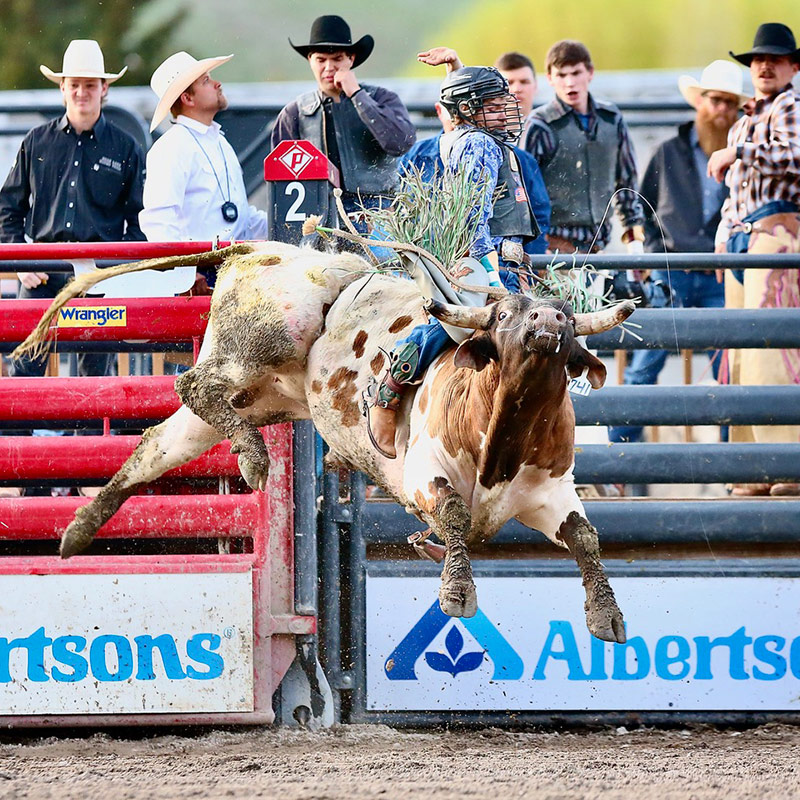
Bull Riding
Bull riding is a risky sport and has been dubbed “the most dangerous eight seconds in sports.” This event involves a rider getting on a bucking bull and attempting to stay mounted while the animal tries to buck off the rider. Once seated on the bull, the rider secures a firm grip on a flat braided rope then nods to signal he is ready. The bucking chute (a small enclosure which opens from the side) is opened and the bull storms out into the arena. The rider must attempt to stay on the bull for at least eight seconds, while only touching the bull with his riding hand. His other hand must remain free for the duration of the ride.
The bull bucks, rears, kicks, spins, and twists in an effort to throw the rider off. This continues for a number of seconds until the rider bucks off or dismounts after completing his ride. A loud buzzer or whistle announces the completion of an eight second ride. Throughout the ride, bullfighters, also popularly known as rodeo clowns, stay near the bull in order to aid the rider if necessary. When the ride ends, whether intentionally or not, the clowns distract the bull to protect the rider from harm.
The ride is scored from 0–100 points. Both the rider and the bull are awarded points. There are usually two judges, each judge scoring the bull from 0–50 points and the rider from 0–50 points. The combined point totals make up the final score for the ride. Scores of zero are quite common as many riders lose control of the animal almost immediately after the bull leaves the bucking chute. Many experienced professionals are able to earn scores of 75 or more. Scores above 80 are considered excellent and a score in the 90’s is exceptional.
Judges award points based on several key aspects of the ride including constant control and the rhythm of the rider in matching his movements with the bull’s. Points are usually deducted if a rider is constantly off balance. For points to be awarded, the rider must stay mounted for a minimum of eight seconds and he is scored only for actions during those eight seconds. The ability to control the bull well allows riders to gain extra “style” points. These are often earned by spurring the animal. A rider is disqualified for touching the bull, the rope, or himself with his free arm.
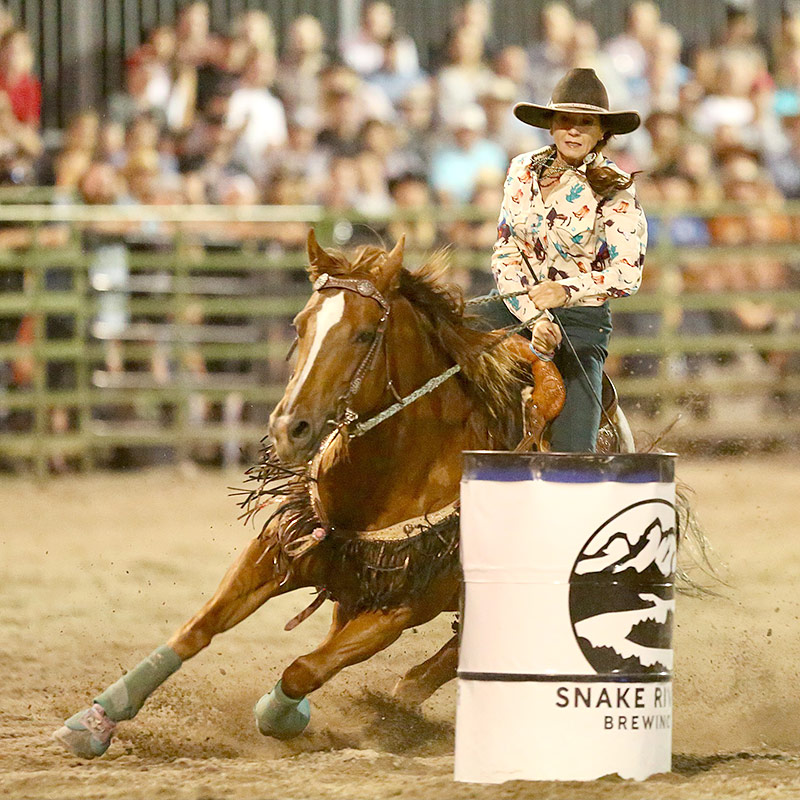
Barrel Racing
This is a rodeo event in which a horse and rider attempt to complete a cloverleaf pattern around preset barrels in the fastest time. While both boys and girls compete at the youth level and men compete in amateur venues, it is primarily a rodeo event for women in collegiate and professional ranks. This event combines both the horse’s athletic ability and the horsemanship skills of the rider to safely and successfully maneuver the horse around three barrels (typically fifty-five gallon metal or plastic drums) placed in a triangle in the center of the arena.
In timed rodeo events, the purpose is to make a run as fast as possible, while the time is being clocked either by an electronic eye, a device using a laser system to record times, or by an arena attendant or judge who manually takes the time using a keen eye and a flag to let a “clocker” know when to hit the timer stop. This last method is more commonly seen in local and non-professional events.
The timer begins when the horse and rider cross the start line, and ends when the barrel pattern has been successfully executed and the horse and rider cross the finish line. The rider’s time depends most commonly on the horse’s physical and mental condition, the rider’s horsemanship abilities, and the type of ground or footing (the quality, depth, content, etc. of the sand or dirt in the arena).
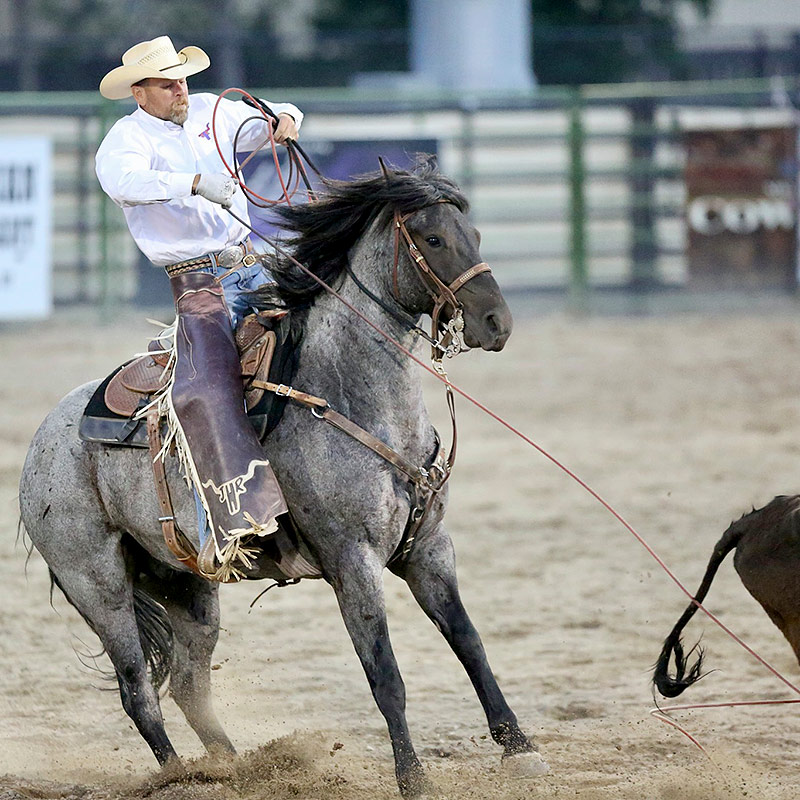
Calf Roping
Also known as tie-down roping, this rodeo event features a calf and a rider mounted on a horse. The goal of this timed event is for the rider to catch the calf by throwing a loop of rope from a lariat around its neck, dismount from the horse, run to the calf, and restrain it by tying three legs together, in the fastest time possible.
Calves are lined up and moved through narrow runways leading to a chute with spring-loaded doors. When a calf enters the chute, a door closes behind it and a lightweight 28-foot (8.5 m) rope attached to a trip lever is fastened around the calf’s neck. The lever holds a taut cord or “barrier” that runs across a large pen or “box” at one side of the calf chute where the horse and rider wait. This barrier is used to ensure that the calf gets a head start. When the roper is ready, he or she calls for the calf and the chute operator pulls the lever to open the chute doors and release the calf. The calf runs out in a straight line and when it reaches the end of the rope, the lever is tripped, the rope falls off the calf and the barrier for the horse is released. At that moment, the clock starts and the horse and rider chase the calf.
Timing is critical in this event. From a standstill, the rider will put his horse into a gallop from the box shortly after the calf leaves the chute, so that the horse saves valuable seconds by being at near-full speed the moment the barrier releases. However, if the rider mistimes his cue to the horse and the horse breaks the barrier before it releases, a 10-second penalty will be added to his time. This is sometimes referred to as a “cowboy speeding ticket.”
The rider must lasso the calf from horseback by throwing a loop of the lariat around the calf’s neck. Next, the roper signals the horse to stop quickly while he dismounts and runs to the calf. The calf must be stopped by the rope but cannot be thrown to the ground by the rope. If the calf falls, the roper loses seconds because he must allow the calf to get back on its feet. When the roper reaches the calf, he picks it up and flips it onto its side. Once the calf is on the ground, the roper ties three of the calf’s legs together with a short rope known as a tie-down rope or “piggin’ string.” A half hitch knot is used, sometimes referred to colloquially as “two wraps and a hooey” or a “wrap and a slap.” The piggin’ string is often carried between the roper’s teeth until he uses it. The horse is trained to assist the roper by slowly backing away from the calf to maintain a steady tension on the rope.
When the tie is complete, the roper throws his hands in the air to signal “time” and stop the clock. The roper then returns to his horse, mounts, and moves the horse forward to relax the tension on the rope. The timer waits for six seconds, during which the calf must stay tied before an official time is recorded. Top professional calf ropers will rope and tie a calf in seven seconds. The world record is just over six seconds.
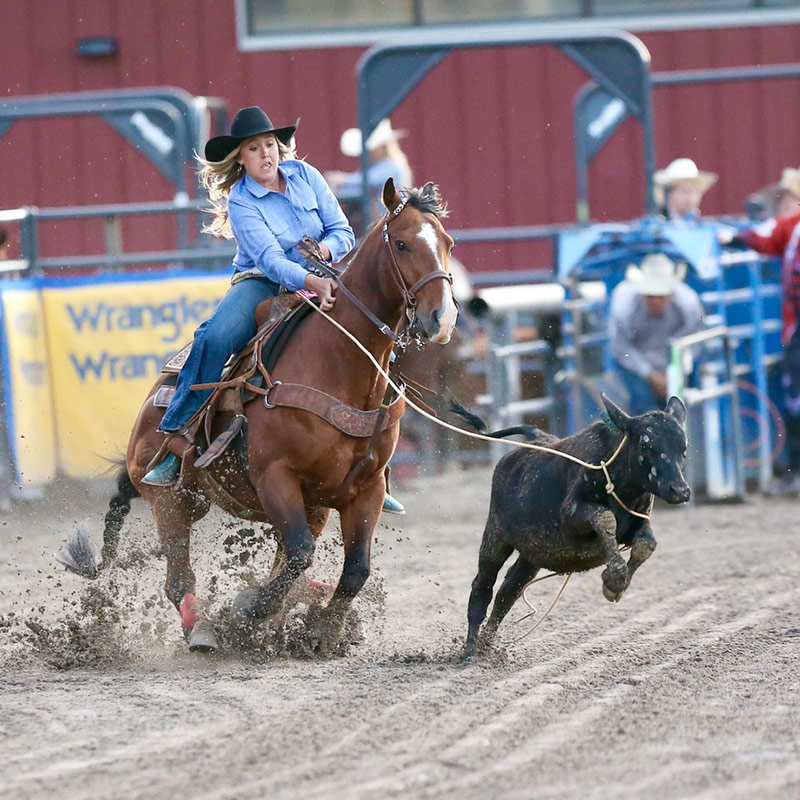
Breakaway Roping
This is a variation of calf roping where a calf is roped, but not thrown and tied. It is a rodeo event that features a calf and one mounted rider. The calves are moved one at a time through narrow runs leading to a chute with spring-loaded doors. The horse and rider wait in a box next to the chute that has a spring-loaded rope, known as the barrier, stretched in front. A light rope is fastened from the chute to the calf’s neck, releasing once the calf is well away from the chute and releasing the barrier, which is used to ensure that the calf gets a head start. Once the barrier has released, the horse runs out of the box while the roper attempts to throw a lasso around the neck of the calf.
Once the rope is around the calf’s neck, the roper signals the horse to stop suddenly. The rope is tied to the saddle horn with a string. When the calf hits the end of the rope, the rope is pulled tight and the string breaks. The breaking of the string marks the end of the run. The rope usually has a small bright flag at the end that makes the moment the rope breaks more easily seen by the timer. The fastest run wins.
Breakaway roping is usually seen in junior, high school and college rodeos. At the collegiate level, it is a primarily a women’s event, but at other levels competitors are both male and female. Some amateur rodeos also have breakaway roping as part of their event lineup.
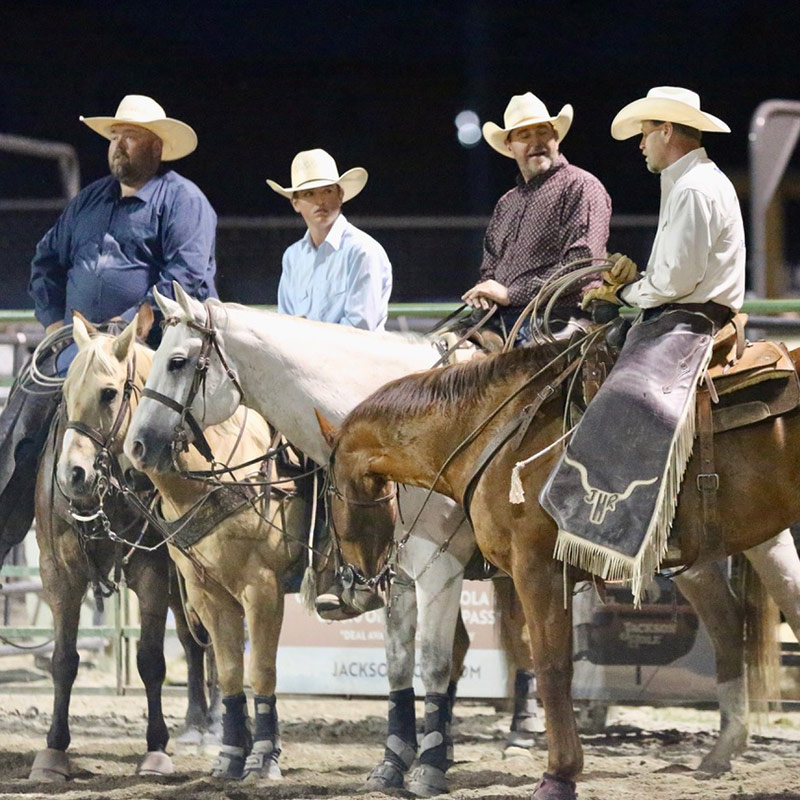
Team Roping
Also known as heading and heeling, this rodeo event features a steer (typically a Corriente) and two mounted riders. The first roper is referred to as the “header,” the person who ropes the front of the steer, usually around the horns, but it is also legal for the rope to go around the neck, or go around one horn and the nose resulting in what they call a “half head,” the second is the “heeler,” who ropes the steer by its hind feet, with a five second penalty assessed to the end time if only one leg is caught. Team roping is the only rodeo event where men and women compete equally together in professionally sanctioned competition, in both single-gender or mixed-gender teams.
Steers used for roping are moved from a holding corral through a series of narrow runways that lead to the roping arena. The runways allow the steers to be lined up in single file. Then, one at a time, a steer is moved into a chute with spring-loaded doors in front and a solid gate behind, so that only one animal is released at a time. On each side of the chute is an area called the box that is big enough to hold a horse and rider. The header is on one side (usually the left, for a right-handed header) whose job is to rope the steer around the horns, then turn the steer so its hind legs can be roped by the “heeler,” who starts from the box on the other side of the chute.
A taut rope, called the barrier, runs in front of the header’s box and is fastened to an easily released rope on the neck of the steer of a designated length, used to ensure that the steer gets a head start. An electronic barrier, consisting of an electric eye connected to a timing device, is sometimes used in place of the barrier rope.
When the header is ready, he or she calls for the steer and an assistant pulls a lever, opening the chute doors. The freed steer breaks out running. When the steer reaches the end of the rope, the barrier releases. The header must rope the steer with one of three legal catches: a clean horn catch around both horns, a neck catch around the neck or a half-head catch around the neck and one horn. The header then takes a dally, a couple of wraps of the rope around the horn of the saddle. Some ropers have lost fingers in this event. Once the header has made the dally, the rider turns the horse, usually to the left, and the steer will follow, still running.
The heeler waits until the header has turned the steer. When he or she has a clear throw, the heeler throws a loop of rope under the running steer’s hind legs and catches them. As soon as the heeler also dallies tight, the header turns his or her horse to directly face the steer and heeler. Both horses back up slightly to stretch out the steer’s hind legs, immobilizing the animal. As soon as the steer is stretched out, an official waves a flag and the time is taken. The steer is released and trots off. There is a 5-second penalty for roping only one hind leg and a 10-second penalty for breaking the barrier.
A successful professional-level team takes between 4 and 12 seconds to stretch the steer, depending on the length of the arena. At lower levels, a team may take longer, particularly if the heeler misses the first throw and has to try again. At higher levels, the header and the heeler are allowed only one throw each, if either misses, the team gets no score.


